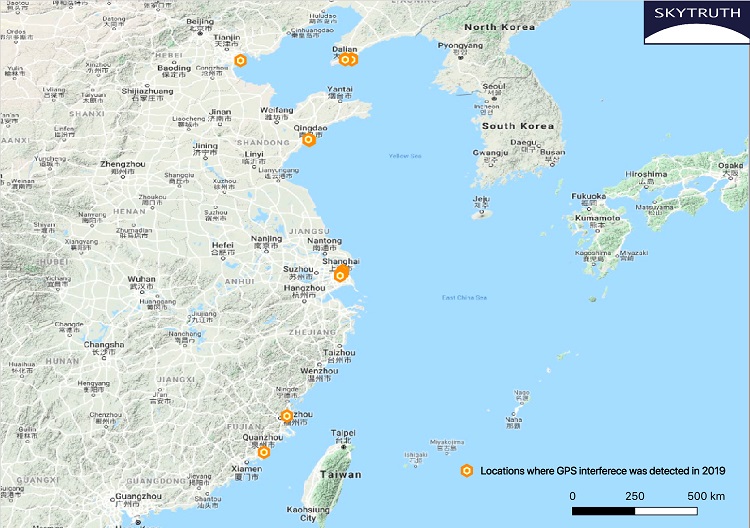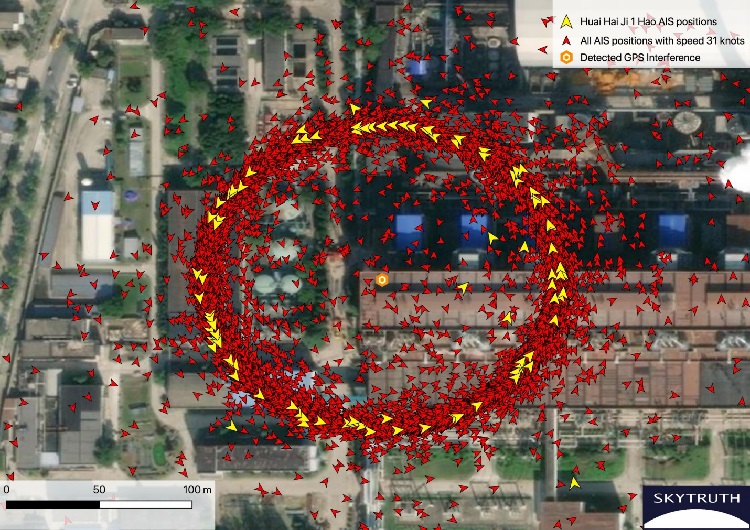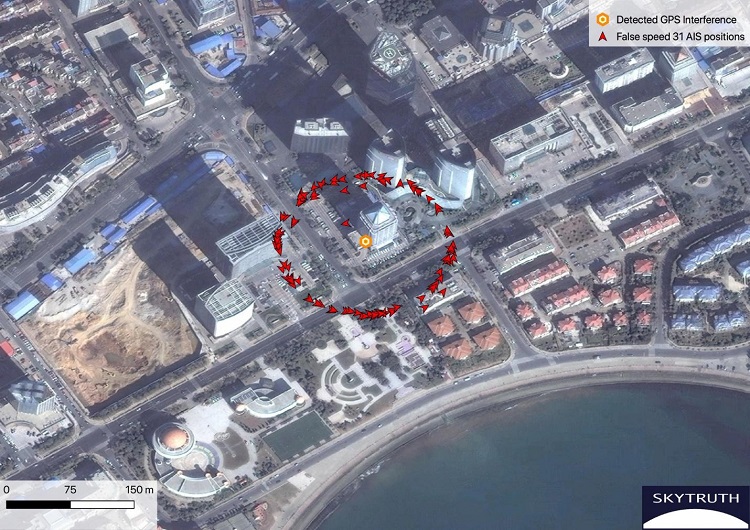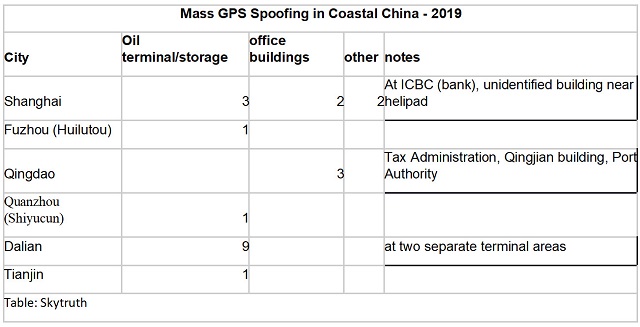Patterns of GPS Spoofing at Chinese Ports
Aggressive GPS spoofing impacting shipping has been detected in over 20 Chinese coastal sites during 2019. These included the ports of Shanghai, Fuzhou (Huilutou), Qingdao, Quanzhou (Shiyucun), Dalian, and Tianjin.

GPS spoofing in Shanghai had been discussed informally among maritime interests for months before a formal report was filed with the U.S. Coast Guard earlier this year. The non-profit C4ADS became interested and found that spoofing had been going on for some time. Also that, over time, many of the false vessel positions tended to form a circle some distance inland.
The MIT Technology Review published an article about this phenomena last month. The MIT article caught the interest of an analyst at the environmental non-profit Skytruth who decided to take a more comprehensive look.
Evaluating a larger data set of ship AIS data, analyst Bjorn Bergman discovered at least 20 locations near the Chinese coast where similar spoofing had taken place in 2019.
14 of these “spoofing circle” locations were oil terminals. The most frequent occurrences, by far were at the port of Dalian in northern China, close to the border with North Korea.
The timing of the spoofing, imposition of sanctions on purchase of Iranian oil by the United States, and observations by others of Iranian oil being received by China, suggests that some of the spoofing may be designed to help conceal these transactions.
Of the locations not associated with oil terminals, three were government offices and one was the headquarters of the Qingjian industrial group, a huge engineering and construction conglomerate. These infrequent and irregular events may be related to visits by important government officials. A C4ADS report earlier this year demonstrated Russia uses GPS spoofing extensively for government VIP protection.
Bergman suggests that the actual spoofing device is located at the center of each of the rings formed by false GPS reports. He has also observed that not all AIS/GPS receivers in the impacted area are affected, the spoofing circles tend to be about 200 meters in diameter, many false vessel positions orbit the circle counterclockwise at 21 knots or 31 knots, and some receivers are spoofed to locations other than the circle.
This kind of mass spoofing is most easily detected in coastal areas because of the wide availability of terrestrial and satellite-based AIS data. It is likely that the kinds of mass disruptions seen in Russian and Chinese maritime regions are occurring elsewhere. The lack of easily accessible data from non-maritime areas, though, makes it more difficult to detect.
While thousands of vessels have likely been impacted by Russian and Chinese spoofing activity, the US Coast Guard Navigation Center has posted only one official GPS problem report from users in each location. A listing of reports received as well as instructions on how to file a report can be found at https://navcen.uscg.gov/?Do=GPSReportStatus
Skytruth Images

AIS data courtesy Global Fishing Watch / Orbcomm / Spire.

A ring of false AIS positions marks an apparent GPS interference device deployed in an office building identified as the Qingdao tax administration office. AIS data courtesy Global Fishing Watch / Orbcomm / Spire.

The opinions expressed herein are the author's and not necessarily those of The Maritime Executive.
